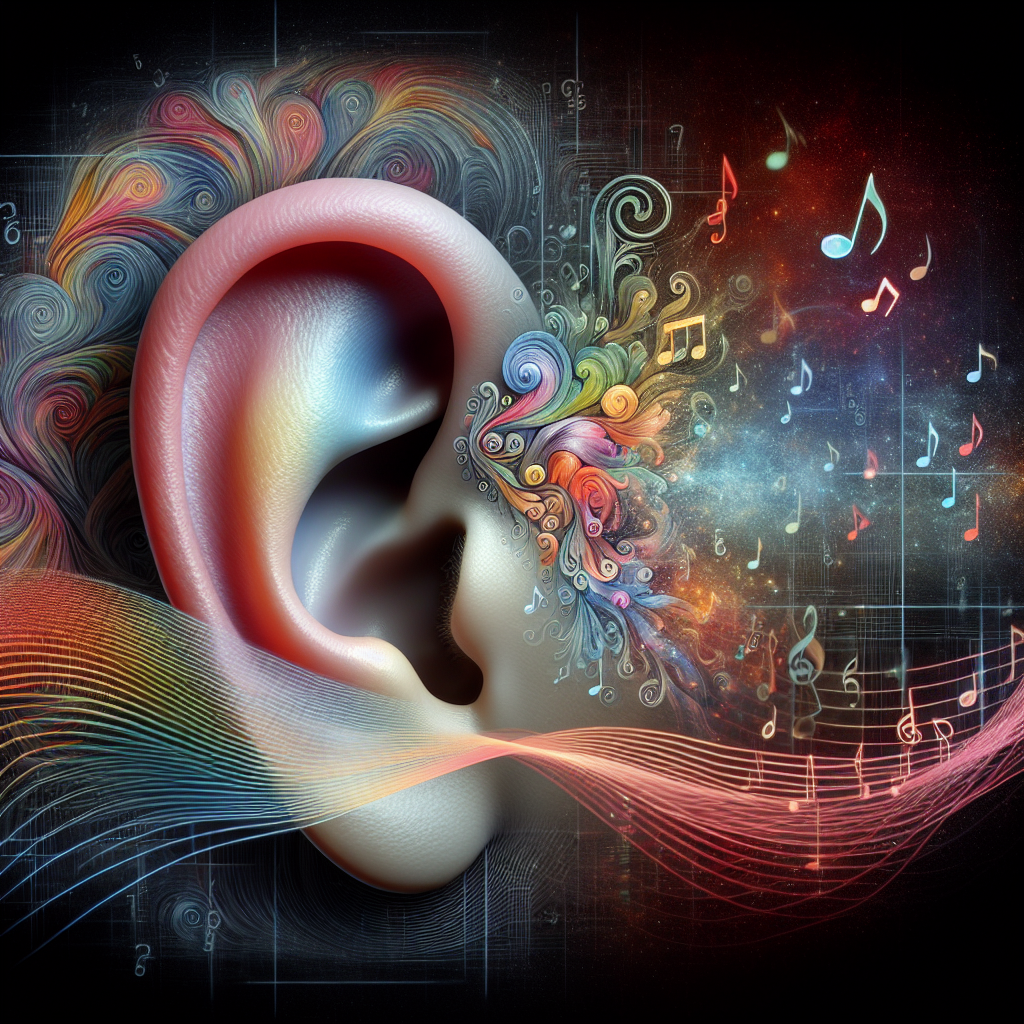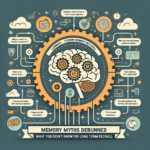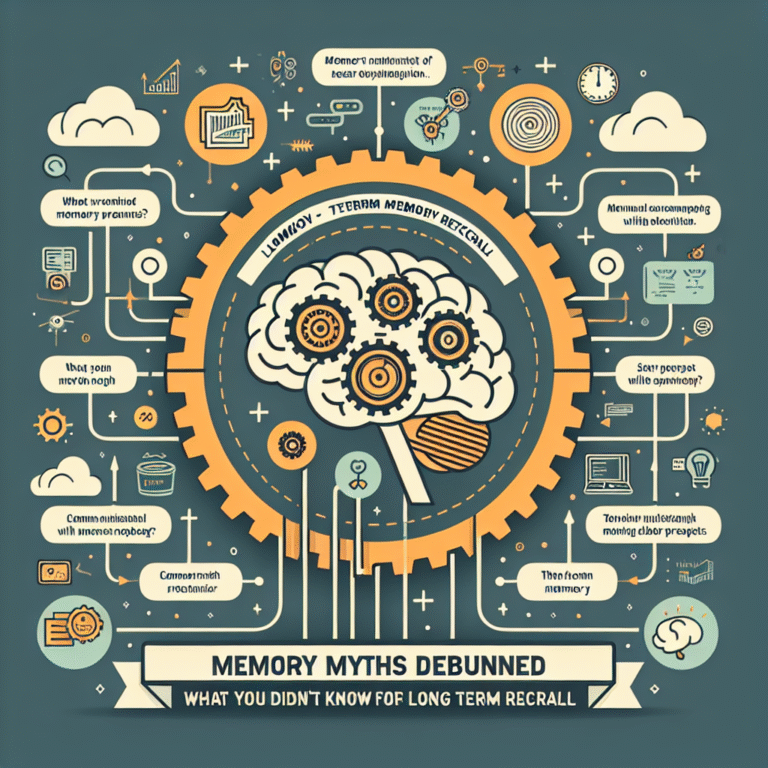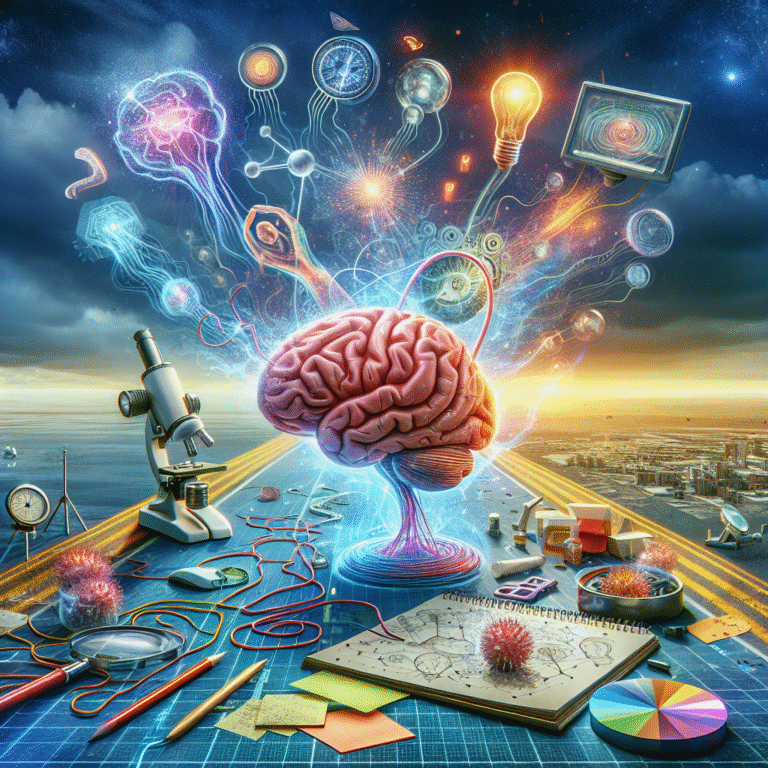
Introduction
Imagine walking through a bustling street where the sounds of laughter, music, and city life surround you. In one moment, you feel invigorated by the vibrant energy; in the next, a discordant noise jolts you, causing an immediate shift in your mood. This powerful example illustrates a profound truth: Decoding Dissonance: How Auditory Perception Shapes Our Emotions is not just an academic inquiry; it is a daily experience that influences our mental well-being, decision-making, and social interactions. Understanding this interaction can transform our approach to life, from how we design our workspaces to how we curate our playlists. Join us as we delve deep into the intricate relationship between sound and emotion, revealing how the auditory landscape shapes our experiences in both profound and subtle ways.
The Science of Sound
1. What Is Auditory Perception?
Auditory perception is the process by which our brains interpret sounds. It’s not merely the act of hearing; it involves recognizing, analyzing, and responding to different auditory stimuli. Our brains are wired to decode sounds in real time—attributing meanings, recalling memories, and generating emotional responses based on what we hear.
2. Emotional Resonance: The Brain’s Response to Sound
When we hear music, for instance, our brains release neurotransmitters like dopamine, which are linked to pleasure and reward. This response underscores the relevance of Decoding Dissonance: How Auditory Perception Shapes Our Emotions. The connection between sound and emotion elicits responses even before we fully process what we hear.
| Type of Sound | Emotional Response |
|---|---|
| Melodic music | Joy, relaxation |
| Dissonant chords | Anxiety, tension |
| Nature sounds | Calmness, nostalgia |
| Urban noise | Stress, agitation |
The Role of Dissonance
3. Understanding Dissonance in Music Theory
In music, dissonance refers to a lack of harmony, which creates tension that the listener subconsciously seeks to resolve. This tension can enhance emotional depth. Composers like Beethoven deliberately used dissonance to evoke powerful emotional reactions. Through Decoding Dissonance: How Auditory Perception Shapes Our Emotions, we can appreciate why certain songs resonate deeply while others fall flat.
Case Study: Beethoven’s Late String Quartets
Beethoven’s late string quartets are a prime example of using dissonance to evoke complex emotional responses. Through his use of unexpected harmonies and structures, Beethoven challenged traditional notions, navigating the listener through a landscape of emotion—from anguish to peace.
Analysis
This case study illustrates the power of dissonance. By deliberately creating tension in his compositions, Beethoven invites listeners not just to hear the music but to feel it, proving that dissonance can be a conduit for emotional expression.
4. The Psychological Impact of Sound
Different sounds not only influence our feelings; they can also affect our behavior. Research shows that environments tailored with specific auditory landscapes can significantly alter mood, creativity, and productivity.
- Background music in restaurants can influence dining behavior and even spending habits.
- Natural sounds in workplaces can enhance focus and reduce stress levels.
Auditory Perception in Everyday Life
5. Soundscapes and Their Emotional Impacts
Everyday soundscapes—ranging from chirping birds to the bustle of city traffic—play critical roles in shaping our emotional which is at the heart of Decoding Dissonance: How Auditory Perception Shapes Our Emotions.
Case Study: Urban vs. Rural Soundscapes
A comparison between urban and rural soundscapes shows stark differences in how auditory perception influences emotional states. Urban environments filled with sirens, honking horns, and construction noises often lead to heightened stress and anxiety. In contrast, rural environments with babbling brooks and birdsong promote calmness and well-being.
Analysis
In this study, the stark contrast in emotional responses to differing environments underscores the importance of curating soundscapes that promote positive emotional states—an essential consideration for urban planners and those designing living spaces.
6. Music as Therapy
The world of music therapy offers fascinating insights into Decoding Dissonance: How Auditory Perception Shapes Our Emotions. Music has been proven to help individuals cope with various psychological conditions, including anxiety, depression, and PTSD.
Case Study: The Use of Music Therapy in PTSD Treatment
The success of music therapy in treating PTSD highlights the relationship between sound and emotional healing. Research at the University of California has shown that patients who engaged in music therapy experienced significant reductions in symptoms, along with increased emotional regulation.
Analysis
This case study emphasizes the therapeutic potential of sound; it is not merely entertainment but a powerful tool for healing and emotional regulation.
7. Designing for Sound
Understanding how sound shapes our emotions can lead to better design in various fields—architecture, urban planning, and interior design.
Practical Applications
- Office Spaces: Open-plan offices filled with chatter can reduce productivity. Introducing ambient sounds or zones for quiet can enhance focus.
- Healthcare Facilities: Calming soundscapes in hospitals can reduce patients’ anxiety levels and improve overall satisfaction.
Table: Practical Applications of Sound Design
| Field | Application | Emotional Impact |
|---|---|---|
| Office Spaces | Ambient sound integration | Enhanced focus and productivity |
| Healthcare Facilities | Calming soundscapes | Reduced anxiety and improved health outcomes |
| Retail Environments | Music tailored to the shopping experience | Increased customer satisfaction and sales |
Bridging the Gap: Dissonance and Harmony
8. The Balance of Dissonance in Life
To fully appreciate Decoding Dissonance: How Auditory Perception Shapes Our Emotions, one must consider the balance between dissonance and harmony in our lives. Just as music contains both, our emotional landscapes are enriched by a range of experiences.
Personal Reflection
Think of a challenging moment in your life as the dissonance that ultimately leads to a resolution, much like a piece of music that requires tension to create a satisfying resolution. Recognizing the role of dissonance allows us to embrace life’s difficulties as opportunities for growth.
9. The Future of Auditory Technology
With advances in technology, the potential for enhancing our emotional response through sound is limitless. Innovations in virtual reality, sound design, and AI-driven music composition open new avenues in therapeutic and everyday contexts.
Case Study: AI and Personalized Music Therapy
Recent advancements in AI have enabled the creation of personalized music therapy playlists tailored to individual emotional states. Early trials have shown promising results in helping users manage stress and anxiety levels.
Analysis
This case study showcases how technology can enhance our understanding of Decoding Dissonance: How Auditory Perception Shapes Our Emotions, providing tailored solutions that could redefine therapeutic practices.
Conclusion
As we navigate through life, the sounds we encounter play a crucial role in shaping our emotional experiences. By understanding Decoding Dissonance: How Auditory Perception Shapes Our Emotions, we unlock the potential to curate our environments, enhance our emotional well-being, and communicate more effectively with ourselves and others. The next time you find yourself in a situation rich with sound, take a moment to reflect on its emotional impact. Embrace both harmony and dissonance as essential elements of the rich tapestry of life.
FAQs
1. What is auditory perception?
Auditory perception is how we interpret and make sense of the sounds we hear. It involves recognizing, analyzing, and responding to various auditory stimuli.
2. How does sound affect our emotions?
Sound can lead to emotional responses through various pathways, such as triggering memories or releasing neurotransmitters that influence mood.
3. Can music be used therapeutically?
Yes, music therapy can help individuals cope with psychological issues like anxiety and depression by using tailored musical experiences to promote emotional healing.
4. How does dissonance play a role in music?
Dissonance creates tension in music that can evoke strong emotional responses. It is often resolved through harmony, reflecting broader emotional journeys in life.
5. How can sound design improve environments?
Thoughtful sound design can create uplifting environments, enhancing comfort and productivity in various spaces, including offices and healthcare facilities.
By leveraging these insights, we can better appreciate the rich interplay between sound and emotion, empowering ourselves to navigate the complexities of life with greater awareness and intentionality.
















